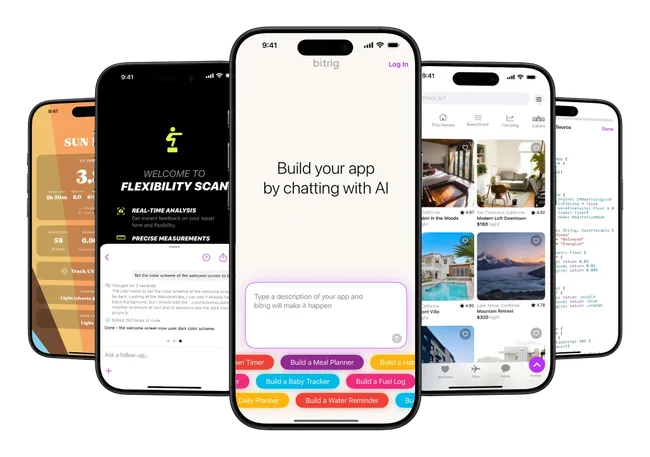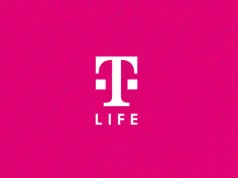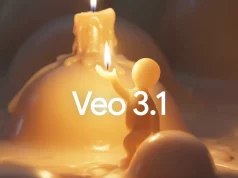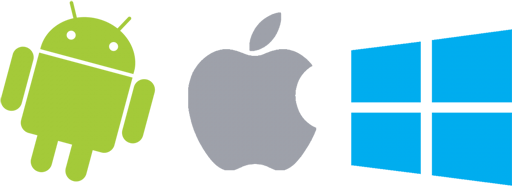Generative AI has evolved at lightning speed. Not long ago, we were watching ChatGPT struggle to rhyme a poem while DALL·E churned out unsettling, dreamlike images of cartoon characters. Fast forward to today—AI systems are now skilled creators, producing text, art, music, and even code that often rivals human output.
One of the most exciting new frontiers is vibe coding—the art of writing software through simple, conversational prompts. Tools like ChatGPT, Claude, and Grok can now spin up functioning codebases, and some even let you host or save your creations with unique URLs. But while these chatbots can generate code, few offer a seamless way to actually use the apps they produce. That’s where Bitrig steps in.
What is Bitrig?
Bitrig is an iOS app with a clear, audacious goal: to let anyone create fully functioning apps using nothing but natural language—or even voice. Instead of spitting out lines of code buried in a chatbot interface, Bitrig transforms your words directly into usable mobile apps, right on your phone.
Each app you create is interactive and can store personalized data, which makes Bitrig more than just a novelty—it’s a potential tool for productivity. You could make a progress tracker for learning a new skill, a quick recipe generator for your family, or a custom planner—no coding required, just clear instructions.
It all sounds revolutionary, but how well does it actually work? I spent some hands-on time with Bitrig to find out.
Hands-On With Bitrig
When you first open Bitrig, you’re greeted with a clean interface split into two main sections: your app library and a chat-style creation window. I used the subscription version, which allows the creation of multiple apps per month, but the free tier still offers plenty of opportunities to experiment.
My first test was a simple one—a to-do list and reminder app. I asked Bitrig to include task lists, notifications, and a notes section. Within moments, it generated an app with three neatly organized tabs, each corresponding to the features I requested. Not only did it look sleek, but it also functioned exactly as described.
Encouraged, I moved on to a meal idea generator. The prompt: “Create a simple app that suggests a random meal each time I press a button.” That’s where the issues began. The app loaded fine, but the button never worked—no suggestions appeared, even after multiple retries or prompt adjustments.
I tried simplifying it further—turning the idea generator into a static list—but still no luck.
Undeterred, I pushed forward with a workout tracker tailored for calisthenics enthusiasts. Bitrig nailed the layout, complete with exercises and counters, but once again, the interactive elements refused to function. The design was crisp, the concept perfect—yet the usability fell apart at the final step.
Switching gears, I created a stretching reminder that prompted me with a new movement every hour. This one worked flawlessly—likely because of its straightforward logic. Encouraged, I tested one of Bitrig’s built-in templates: a stock chart tracking live market data. Disappointingly, the app launched only to display broken code instead of charts.
The Verdict: Promise Over Polish
If this were the end of the story, you’d think Bitrig was a failure—but that’s not the full picture. Despite its bugs and limitations, Bitrig shows enormous promise. It’s tackling one of the hardest problems in generative AI—turning natural language into fully executable, user-friendly software.
The rough edges are obvious: broken features, inconsistent functionality, and a clear gap between vision and execution. But considering how young this tool is, the foundation is surprisingly strong. Like most early AI experiments, Bitrig feels more like a glimpse of the future than a finished product.
For now, it’s an intriguing prototype that shows where consumer-friendly app creation is headed. With refinement and better debugging integration, it could easily become one of the most transformative creative tools in the no-code landscape.
Verdict: Try the free version for fun, but hold off on the subscription—for now. The potential, though, is undeniable.










